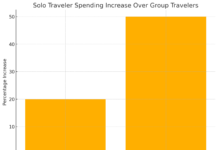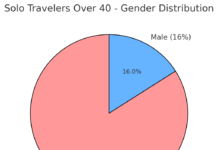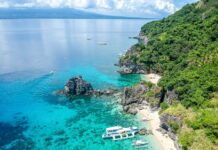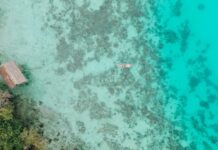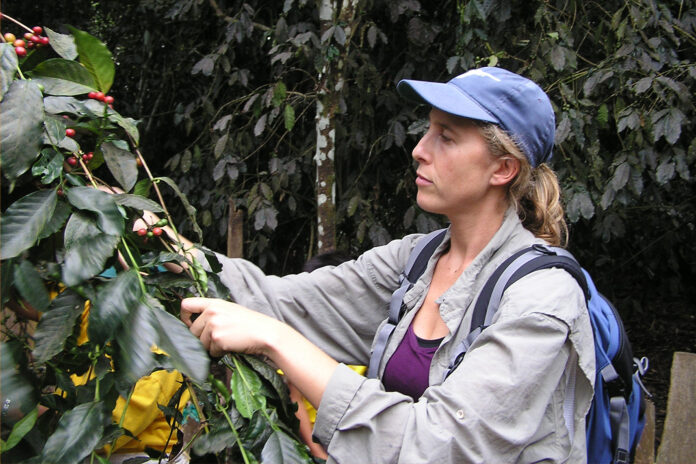Travel and conservation go hand-in-hand in Maria Fadiman’s world: She’s a National Geographic conservationist and an expert on National Geographic Expeditions to places like Costa Rica, Spain, and Scotland.
“My favorite part of my role as a National Geographic Expert and representing National Geographic is getting to be with the guests while we all get to experience new areas,” says Fadiman. “People who choose National Geographic trips are interesting, curious, and fun.”
One of the biggest parts of her job on expeditions is to lead presentations about the landscape and culture of a destination for guests. “I have a great time telling stories [and] interspersing them throughout the information. I like it when we all have fun while simultaneously triggering new ways of thinking and being where we are,” she says.
The road to becoming a conservationist hasn’t been the typical path, though. “I always wanted to work in conservation, and I was nervous to learn science. In college, I volunteered as a naturalist guide in the Costa Rican rainforest on the Osa Peninsula. The only problem was, I didn’t know anything about the ecosystem. I had studied Spanish, so I could translate, and that is what got me out there,” Fadiman notes.
After her first year in Costa Rica, she returned the following year to be a full-time naturalist guide. “In learning all of this, I also realized that the local people were the ones who were teaching me their information. It became clear that if I wanted to work to preserve the forest, I needed to include people. They are a part of the ecosystem.”
For Fadiman, there are three main things that people should consider when it comes to conservation and understanding other cultures: landscapes, people, and food. “I think that exposing ourselves to new regions, continuing to learn about how we are all wonderfully different and still connected, has value. And, as we see new ecosystems and cultures, having an awareness of our impact can actually enhance our experience,” she explains.
“When we experience different landscapes, we grow in unexpected ways,” Fadiman says. While on a recent trip to Costa Rica with National Geographic Expeditions, the group she was traveling with was able to see a quetzal, a colorful bird that calls the rainforest home. “We then learned that the quetzal has the status of a ‘Near Threatened’ species, and that habitat is crucial to their continued existence. That fact means more to me than it could have if I had not experienced that moment with that group,” she says.
Fadiman also says that when people travel and connect with others they become part of each other’s humanity. “The people who are different from me are no longer ‘other,’ they are that person with their name, their life, and now, their connection to me, and me to them,” she explains. “I remember the Quichua girl in the Amazon who took my hand to show me where the palm trees were fruiting and taught me how to collect them without being stuck by the spines. So now, when I hear of things happening in those areas, it affects me differently than if I had never been a part of that world.”
Like most travelers, Fadiman loves indulging in the cuisine of other cultures while she’s exploring new places. “Food is a key form of living cultural expression. And in terms of conservation, it is good for us all to stay aware of what is sustainable in reference to consumption,” she explains. “Although something may be a delicacy or special to the region, if it is an endangered plant or animal, or grown in a way that lends to deforestation or raised in inhumane ways, we may want to refrain from consuming that dish.”
What’s in your travel bag, Maria Fadiman?
For those who are looking to travel more sustainably, Fadiman has a few tips. The first is to walk wherever you can while traveling. This allows you to truly soak in the experience. The second is to seek out local conservation groups and see how you can get involved by donating or learning about the work that they do.
The biggest way to travel more sustainably is to do volunteer work, according to Fadiman. “Much of my early travel was through volunteering. When I walked behind a curandero in the forest as I took notes on the plants he showed me, I felt a part of his culture and the forest for that moment,” she says.
Lastly, Fadiman says to think about the products that you’re bringing with you on trips. Consider bringing biodegradable soaps and shampoos. She also says packing lightweight bags that can be reused for shopping instead of single-use bags.
So what’s Fadiman packing in her carry-on? The top seven things may surprise you. Note that we’ve pulled the top-selling products in each category.
Duct tape
Duct tape may not be on your packing list, but according to Fadiman, it should be.
“Duct tape is simply the best travel companion. I roll some around a pen as a way to carry it. Duct tape can hold almost anything together for the rest of a trip, and so many things suddenly seem to need holding together. You can then mend something, instead of buying a new one to replace it,” she says.
Reusable rain poncho
A rain poncho is a necessity for Fadiman and anyone else who wants to visit the rainforest. “We never know when rain will burst forth, and I like to pop it on and have a moment of feeling like I just may stay dry,” she says.
This option has a hood, which is great for keeping your hair dry and the little visor piece keeps rain out of your eyes. The poncho comes in eight different colors and comes with a reusable bag to store it in. It can also double as an emergency shelter or a cover for backpacks or other gear if needed.
A small backpack
This 25-liter backpack is ideal for day trips and hiking. The body and lining are made from recycled materials, so you can feel good about wearing this one. There is an integrated rain cover, along with plenty of pockets and pouches for storage. The side pocket is made from a mesh material allowing you to grab water bottles or phones quickly.
Fadiman uses her backpack to carry essentials like water, a camera, and her poncho.
A light scarf
Fadiman loves a light scarf in her travel bag. “If I am cold, I can wrap it around my neck or lay it over my legs as a little blanket. If [it’s] sunny when I land, I can whip it out and drape it over my shoulders for sun protection,” she explains.
This option comes in eight different colors and is made from a soft jersey-like material that has UPF 50+ integrated into the material. The shawl can be used as a scarf or a wrap on a plane or while exploring a new destination.
Chemical-free sunscreen
“When I do use sunblock, I try [to] choose chemical free. It is important that I protect myself while simultaneously protecting the region I am visiting. Even if not swimming, I want [a] sunscreen that if rain or sweat washes it off, it will not then damage the soil where I am walking. And, I have to remind myself that what I use goes into the groundwater, even though I may not see that process,” Fadiman says.
For a chemical-free sunscreen, consider the Sun Bum Mineral SPF 50 sunscreen. The zinc-based lotion is vegan, gluten-free, cruelty-free, and reef-friendly so you can feel good about wearing it on your next adventures.
A reusable water bottle
“It is important that I stay hydrated when I travel. Using my reusable bottle means that I don’t have to buy single-use bottles,” says Fadiman.
If you’re looking for a new reusable water bottle, the Iron Flask option is ideal. The bottle comes in six different sizes ranging from 12 ounces to 64 ounces and over two dozen colors. The insulted bottles come with three different types of lids: a straw lid, a flip lid, and a handle lid.
A trusty headlamp
The last necessity for Fadiman is a headlamp. “I never know when I will want to go on a night hike or an early morning exploration,” she explains.
This option has a 1200-lumen white light. The rechargeable headlamp has 12 light modes that can be switched from strong white to low light and even red light. The light can be adjusted by 60 degrees so you can point it directly at whatever you’re trying to see with ease.

